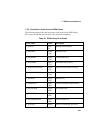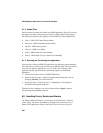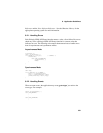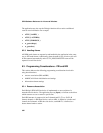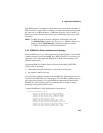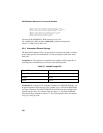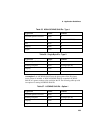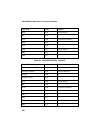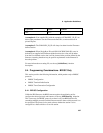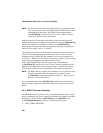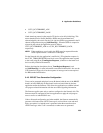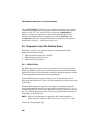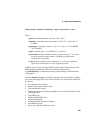
ISDN Software Reference for Linux and Windows
354
makecall_blk.isdn.origination_sub_number_type = 0xFF;
makecall_blk.isdn.origination_sub_phone_number[0] = NULL;
makecall_blk.isdn.origination_phone_number[0] = NULL;
makecall_blk.isdn.facility_feature_service = 0xFF;
makecall_blk.isdn.facility_coding_value = 0xFF;
makecall_blk.isdn.usrinfo_bufp = NULL;
makecall_blk.isdn.nsfc_bufp = NULL;
For more on the MAKECALL_BLK structure, see Section
6.8. MAKECALL_BLK and the cc_MakeCall( ) function description in
Chapter5. ISDN Function Reference.
8.3.3. Information Element Settings
The information elements (IEs) to be passed down to the network need to conform
to the switch-specific recommendations. Use the assumptions listed below when
setting IEs.
Assumption 1: The customer is responsible for providing variable length IEs in
ascending order in the Public part, as shown in the following table.
Table 54. Variable Length IEs
Type of IE Value
Network Specific Facilities 0x20
Display 0x28
Signal 0x34
Assumption 2: A single byte IE (with the exception of a LOCKING Shift IE) can
be placed anywhere in the message. This includes Type 1 (NON-LOCKING Shift)
and Type 2 elements. The NON-LOCKING shift should cause the codeshift in the
forward direction only. For example, when in codeset "3," the NON-LOCKING
shift should add an element in codeset "4." The following tables show the settings
for Type 1 and Type 2 IEs.




